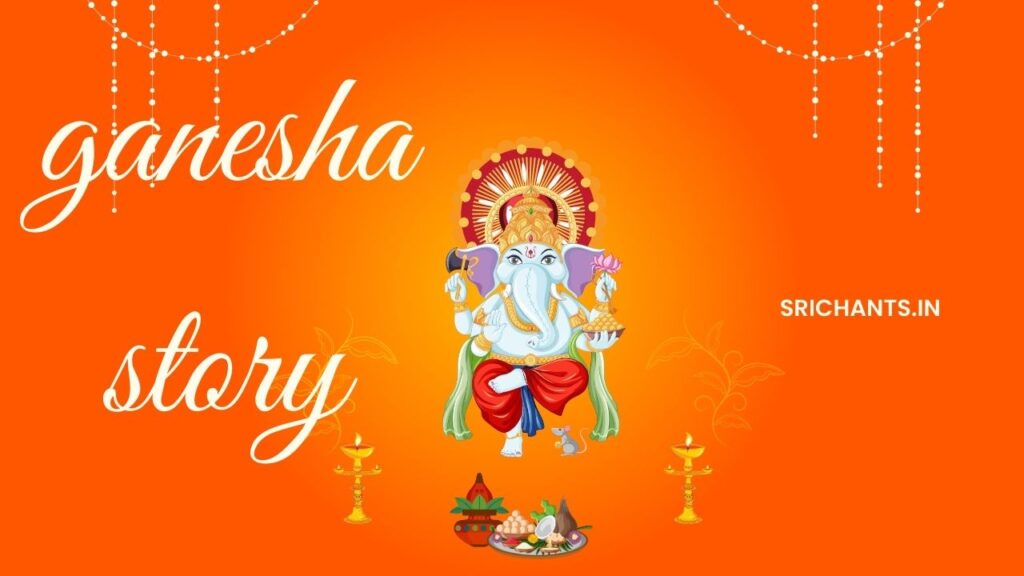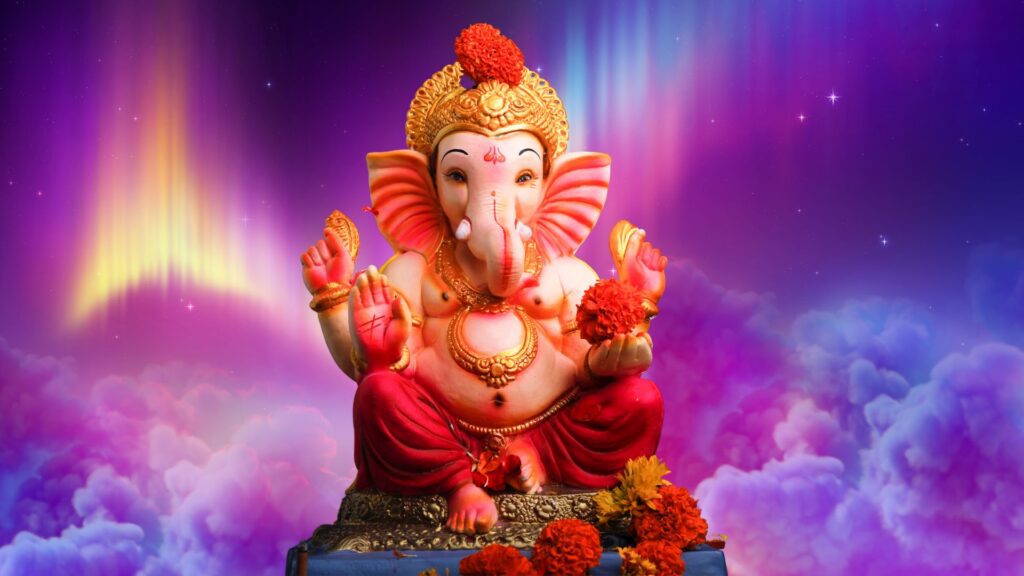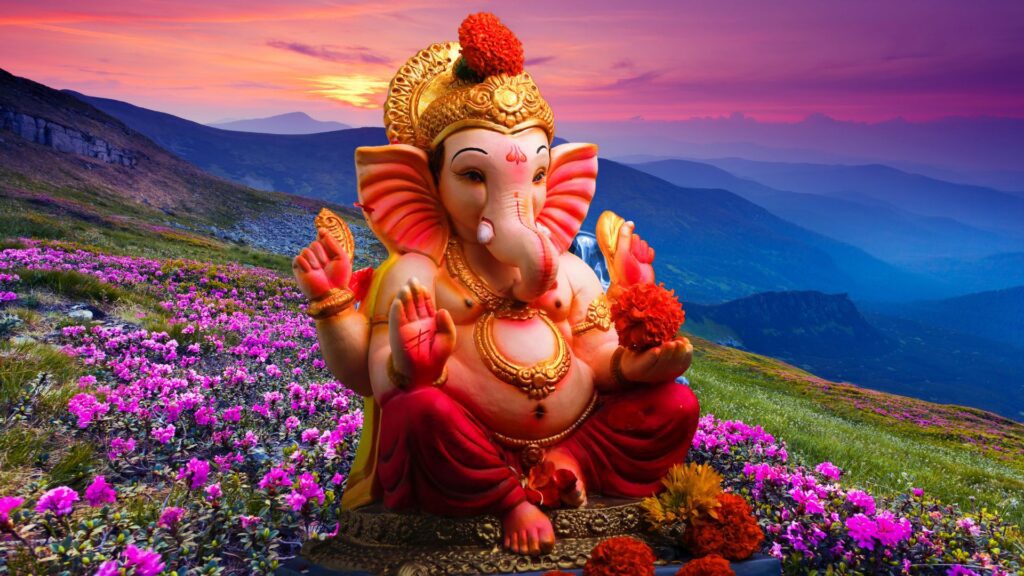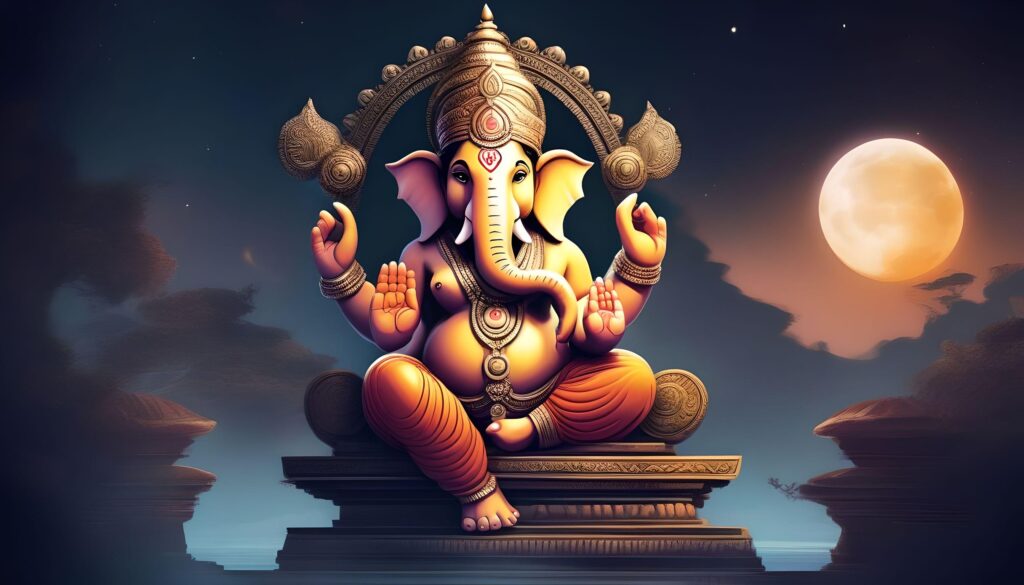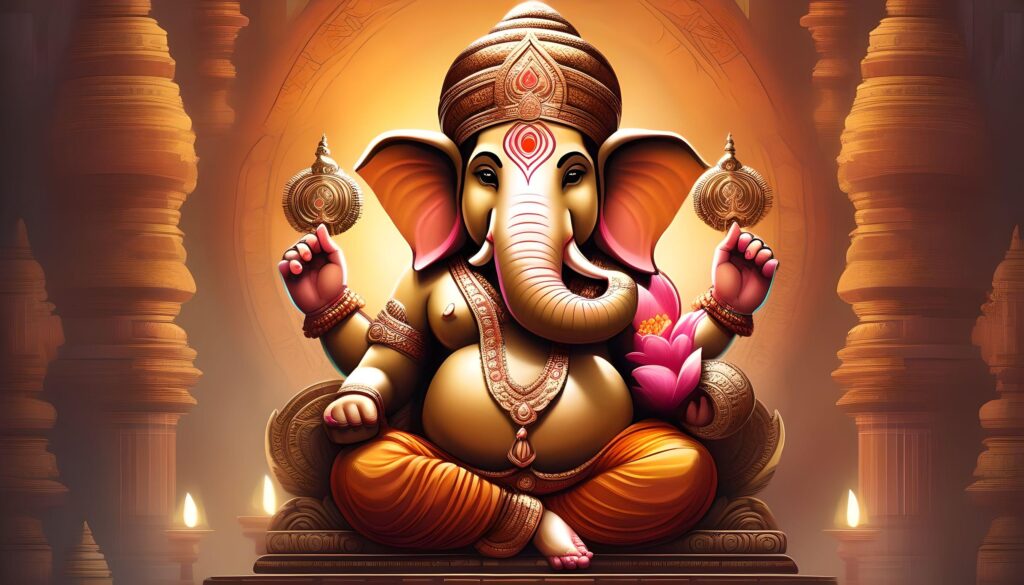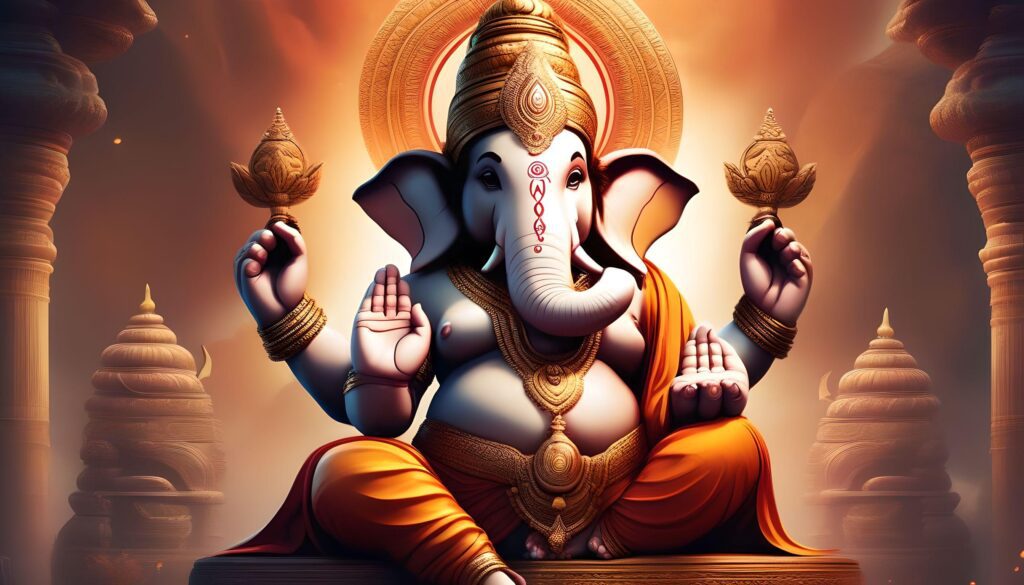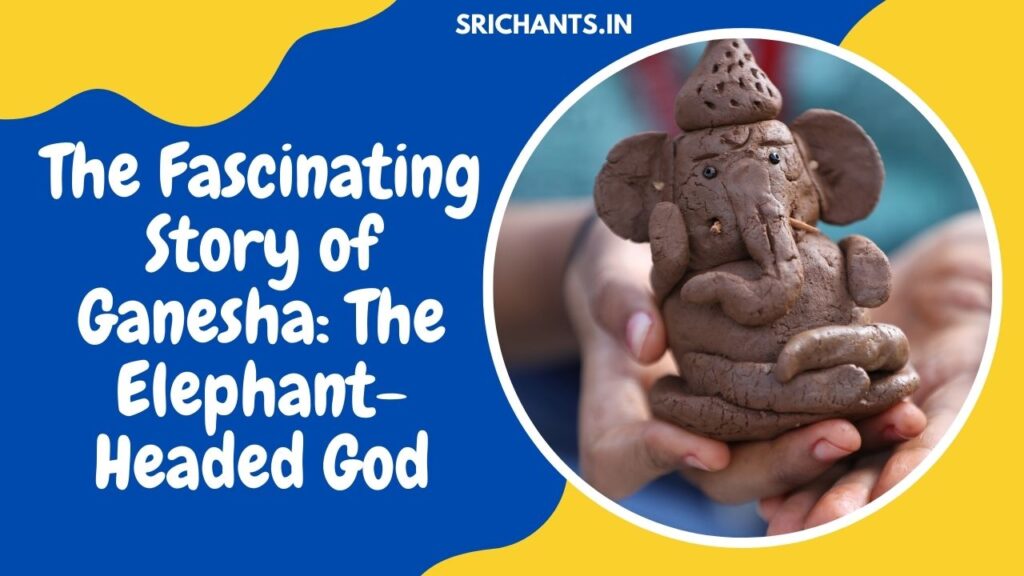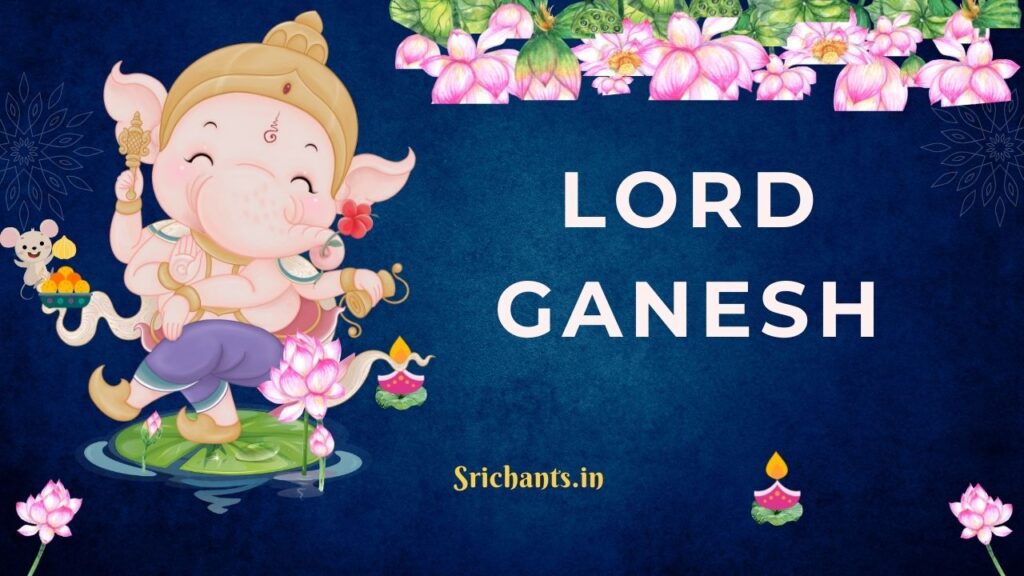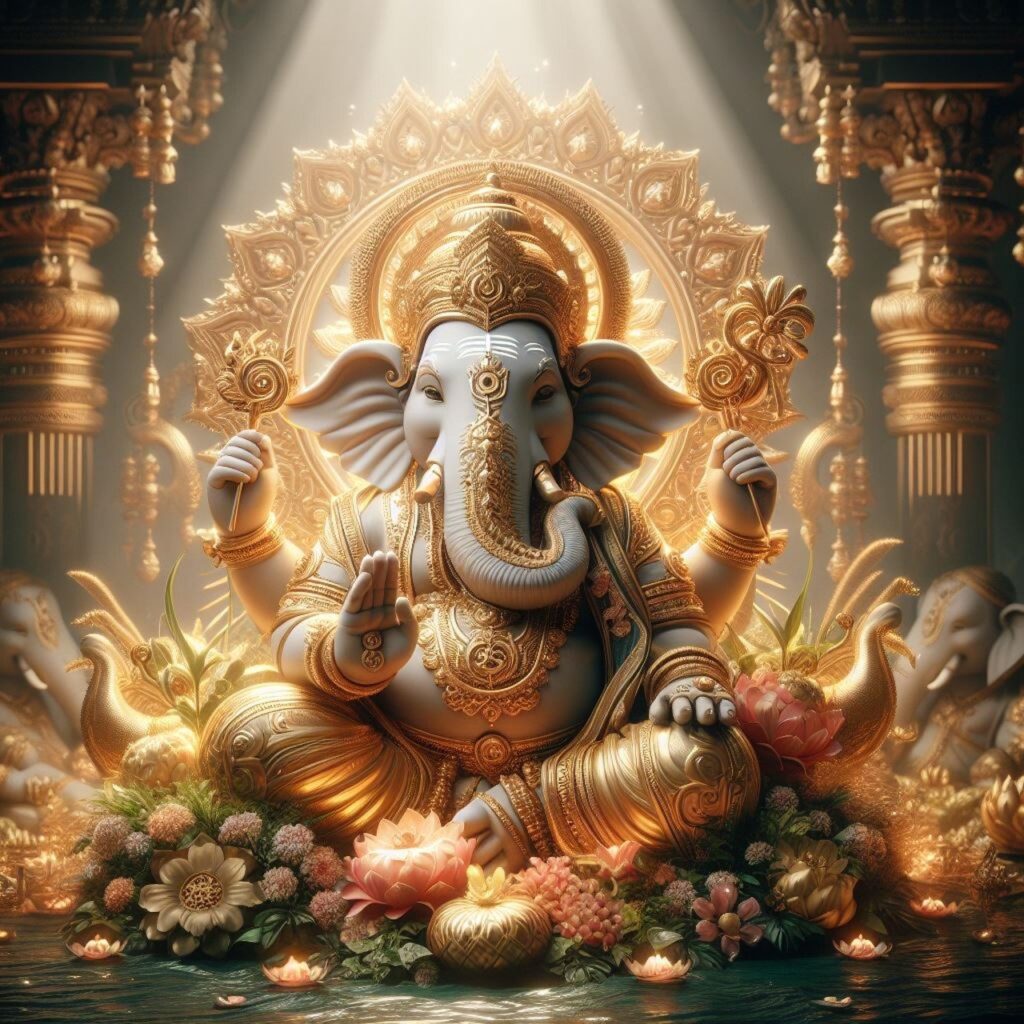Ganesha Story : 12 Fascinating Stories of Lord Ganesha
Introduction
Lord Ganesha, who is also referred to as Ganapati or Vinayaka, occupies an immensely significant position in Hindu mythology. He is widely revered as the deity of wisdom, intellect, and prosperity and the remover of obstacles due to his elephant head and potbelly. Lord Ganesha is the subject of a plethora of captivating legends and stories that provide valuable lessons and insights for both children and adults. This article will investigate 14 captivating tales of Lord Ganesha, each of which possesses its own moral and symbolic significance.
1. The Birth of Ganesha
The narrative of Lord Ganesha’s birth is a captivating narrative that illustrates the love between Lord Shiva and Goddess Parvati. Parvati once decided to take a bath while Lord Shiva was away and produced a boy out of turmeric paste. She gave him the name Ganesha and requested that he patrol the entrance while she was bathing. Ganesha, who did not recognize Lord Shiva as his father, obstructed his entry when he returned. Ganesha was beheaded by Lord Shiva in a fit of anger. Parvati was incensed and threatened to end the universe upon witnessing her son’s death. Lord Shiva assured her that he would revive Ganesha in order to appease her. He directed his disciples to locate the elephant’s head, which was the first living being they encountered. Shiva and Parvati bestowed upon Ganesha an elephant head upon his resurrection, and he became their cherished son.
Moral: This narrative emphasizes the significance of acknowledging our errors and addressing them. It also underscores the unconditional affection that exists between a mother and her child.
2. Ganesha and the Moon
Ganesha’s playful nature and affection for desserts are the focal points of this delightful narrative. Ganesha was renowned for his affinity for ladoos, a beloved Indian confection. One day, a devotee presented Ganesha with a substantial quantity of ladoos, which he eagerly consumed. Ganesha tripped and collapsed while riding his mouse vehicle back home, his belly full. The candies were dispersed throughout the area as a result of the impact. Ganesha’s clumsy fall caused the moon to erupt in mirth as it observed the event. Ganesha, incensed by the moon’s mockery, cursed it, declaring that everyone who gazed at the moon on Ganesh Chaturthi, a festival honoring Ganesha, would be unjustly accused of misconduct. The moon acknowledged its error and requested forgiveness. Ganesha mitigated the curse’s effects, enabling redemption by gazing at the moon on the second day of the fortnight and listening to narratives of Lord Krishna or the Syamantaka jewel.
Moral: This narrative emphasizes the significance of forgiving others and refraining from disparaging their shortcomings.
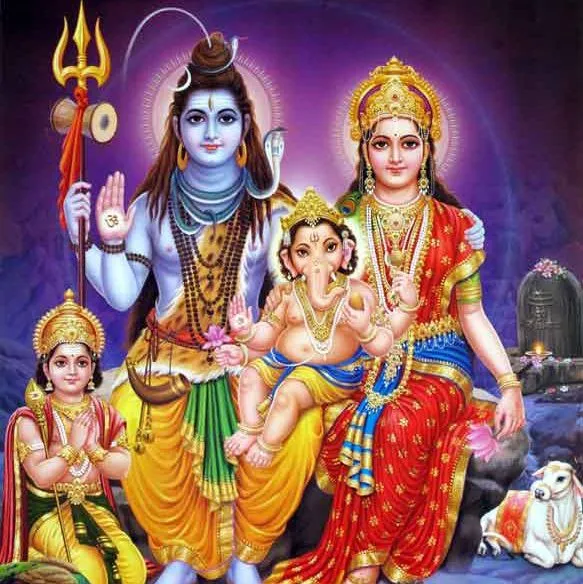
3. Ganesha and Murugan
The offspring of Lord Shiva and Goddess Parvati are Lord Ganesha and Lord Murugan, who are also referred to as Kartikeya. The central theme of this narrative is the rivalry between the two brothers to ascertain who is the more shrewd. The gods were unable to reach a consensus regarding the victor, and as a result, they sought the assistance of Lord Brahma. Brahma formulated a challenge: the individual who could circumnavigate the globe three times and return first would be recognized as the most enlightened. Murugan promptly departed, assured of his victory as a result of the peacock vehicle’s velocity. Knowing that he could not match his brother’s speed, Ganesha opted for an alternative strategy. He encircled Lord Shiva and Goddess Parvati, elucidating that they were the entirety of his existence. The gods declared Ganesha the victorious, as they were impressed by his devotion and intellect.
Moral: This narrative underscores the importance of wisdom and illustrates that intelligence manifests in various forms.
4. Ganesha and His Broken Tusk
This captivating narrative is presented in two distinct versions. Sage Vyasa requested that Ganesha transcribe the Mahabharata, according to one account. Ganesha concurred; however, she stipulated that Vyasa must continue to dictate without interruption. Ganesha’s feather pen was damaged during his urgency to finalize the epic. In order to continue writing, he severed one of his tusks and employed it as a pen. Ganesha’s dedication to knowledge and his readiness to surmount challenges in order to fulfill his obligations are illustrated by this sacrifice.
Lord Parashurama, an avatar of Lord Vishnu, visited Lord Shiva in the second version to request his favors. Ganesha, who was oblivious of Parashurama’s intentions, prevented him from entering Shiva’s residence, which resulted in a conflict between the two. Ganesha’s tusk was severed when Parashurama hurled his blade at him. Ganesha maintained his composure and forgave Parashurama, despite the injury.
Moral: The determination and sacrifice of Ganesha for the greater good are underscored in these stories.
5. Ganesha and His Two Wives
The focal point of this narrative is Ganesha’s marriage. Ganesha encountered challenges in locating a suitable bride as a result of his distinctive elephant cranium. Lord Shiva and Goddess Parvati resolved to resolve the situation independently in order to secure him a companion. Riddhi (prosperity) and Siddhi (intellectual and spiritual power) were the two beautiful daughters they produced, and they were married to Ganesha. Subha (auspiciousness) and Labha (profit) were the names of their two sons, which served as a testament to the advantages that accompany a harmonious union.
Moral: This narrative underscores the significance of compatibility and interior qualities in a marriage.

6. Ganesha and Lord Kubera
This narrative emphasizes the repercussions of prosperity and pride, as well as Ganesha’s humility. Lord Kubera, the god of prosperity, hosted a grand feast and extended an invitation to numerous distinguished guests, including Lord Shiva. Lord Shiva, who was unable to attend, designated Ganesha as his representative. Ganesha, who is renowned for his voracious appetite, ingested all of the food and even began to consume Kubera’s possessions. Kubera sought the intervention of Lord Shiva out of fear for his life. Shiva presented Ganesha with a cup of roasted rice, which immediately quenched his appetite. Kubera learned the significance of humility and the necessity of sharing his wealth with others as a result of Ganesha’s actions.
Moral: This narrative emphasizes the significance of generosity and the dangers of avarice.
7. Ganesha and the Bowl of Kheer
The importance of selflessness and devotion is underscored in this narrative. Ganesha, in the guise of a juvenile boy, visited a village with a spoonful of milk and a handful of rice. He visited household after household in search of an individual who could prepare him a portion of kheer, a sweet rice pudding. Although the majority of individuals were preoccupied, a destitute woman consented to prepare the kheer. Ganesha went outside to play after she fell unconscious while cooking. The kheer was cooked to perfection when she awoke. She presented a portion of the food to the idol of Ganesha prior to consuming it. Ganesha bestowed upon her health and prosperity, despite her hunger, as the kheer never ran out.
Moral: This narrative underscores the significance of sharing, selflessness, and devotion.

8. Ganesha at Kubera’s Wedding
This narrative underscores the importance of humility and the repercussions of hubris. Kubera, who was renowned for his riches and pride, extended an invitation to a number of guests to his wedding feast. Ganesha was designated as the representative of Lord Shiva and Goddess Parvati. Nevertheless, Ganesha was displeased with Kubera’s conduct and resolved to impart a lesson to him. In addition to consuming all of the sustenance, he also consumed Kubera and his wealth. Kubera, terrified, requested the assistance of Lord Shiva. Shiva presented Ganesha with a straightforward basin of cereals, and he was content with the meal. Kubera acquired an understanding of the necessity of humility and the necessity of distributing his wealth to others.
Moral: This narrative emphasizes the significance of humility and sharing, as well as the hazards of arrogance.
9. Ganesha and the Cat
This narrative underscores the significance of treating all living organisms with compassion and humanity. Ganesha, who is renowned for his mischievous nature, encountered a cat while playing and treated it harshly. The cat was a manifestation of the Goddess Parvati, which he was unaware of. Ganesha discovered Parvati in a state of distress and injury upon his return home. Parvati disclosed that she had assumed the form of a cat in order to engage in playful play with Ganesha; however, his actions had resulted in her injuries. Ganesha pledged to handle all animals with love and respect after he realized his error.
Moral: This narrative instructs us to demonstrate compassion and benevolence toward all living organisms.
10. Ganesha and the River Kaveri
The Kaveri River’s origin in southern India is the subject of this narrative. Sage Agastya aspired to establish a river that would be advantageous to the inhabitants of the area. His request was granted by the spirits, who presented him with a small bowl of water. Agastya encountered a young child (Ganesha in disguise) while traveling to locate an appropriate location and requested that he hold the bowl while he relieved himself. The bowl was deposited by the child, who recognized the potential of the location. Upon his return, Agastya observed the basin toppled over, and the river Kaveri was said to have originated from that location. This narrative instructs us that events occur for a reason, regardless of whether they proceed as anticipated.
The moral of this narrative is that all events have a purpose, even if they do not conform to our initial expectations.
11. Ganesha’s Wisdom
This narrative depicts Ganesha’s profound comprehension of the significance of family and his intelligence. Ganesha and his younger sibling, Karthikeya, discovered a distinctive fruit in the forest and both asserted ownership. Lord Shiva proposed a challenge to resolve the dispute: the individual who could circumnavigate the globe three times and return first would be recognized as the rightful owner. Ganesha walked around their parents, Shiva and Parvati, explaining that they were his entire universe, while Karthikeya flew on his peacock. After being impressed by Ganesha’s devotion and wisdom, he was declared the victor.
Moral: This narrative emphasizes the importance of prioritizing family, identifying innovative solutions to conflicts, and acquiring wisdom.
12. Ganesha and His Modak
Ganesha’s mischievous nature and fondness for food are revealed in this narrative. Parvati once prepared modak, a treat that was Ganesha’s favorite. Modak is a dumpling that is filled with jaggery and coconut. Due to his inability to resist, Ganesha consumed an abundance of modaks. He encountered a serpent later on while riding his mouse vehicle. Ganesha’s intestines ruptured as a result of the abrupt movement, and the modaks dislodged. Ganesha promptly collected the modaks and reinserted them into his stomach, securing them with a serpent that was tied around his waist. Ganesha was met with laughter by the moon, which observed the event. Ganesha responded by cursing the moon, declaring that anyone who gazed upon it on Ganesh Chaturthi would be unjustly accused. This narrative emphasizes the significance of self-acceptance and the prohibition of ridiculing others.
Moral: This narrative instructs us to appreciate our individuality and refrain from disparaging others for their distinctions.

Conclusion
The narratives of Lord Ganesha are not only amusing, but they also impart valuable life lessons and principles. The tales of Lord Ganesha, from his birth and wisdom to his playful antics and compassion, serve as an inspiration for us to be kind, understanding, and meek. The adoption of these teachings can enable us to surmount challenges, cultivate harmonious relationships, and lead a more meaningful and fulfilling existence. Let us commemorate the wisdom and virtues of Lord Ganesha and endeavor to integrate them into our personal lives.
#ganesh #stories #ganeshstories #storiesofganesh #lordganesh
